Your brand archetype: Defining your personality
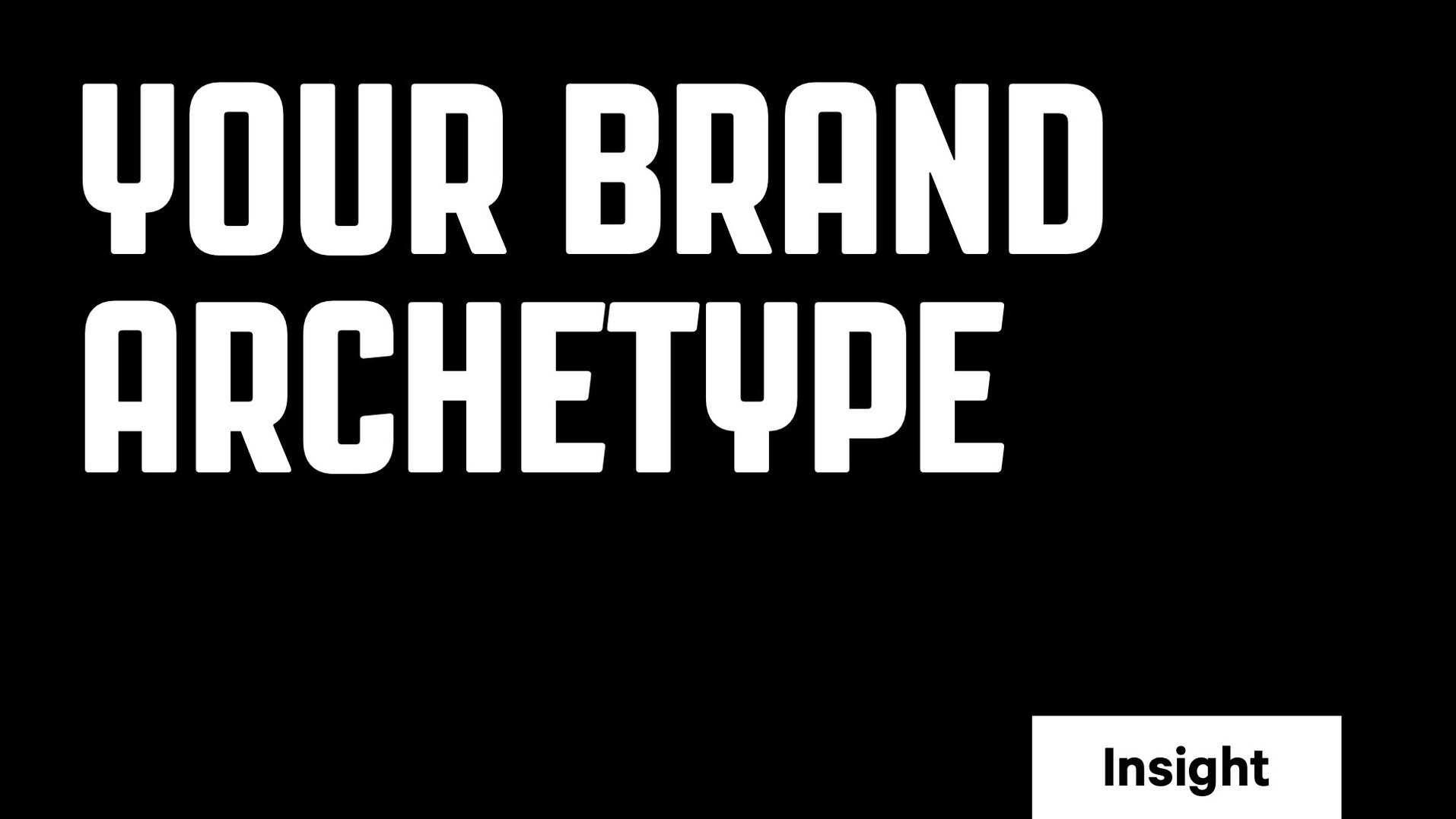
Think accountant. Now think film director. Now footballer. With each, an instant picture will have come to mind; how they look, how they speak, what they’re like. What you’ve imagined is an archetype – a perfect example of a particular type of person or thing.
Archetypes are synonymous with Carl Jung, founder of analytical psychology, and coiner of the terms introvert and extrovert. According to him, archetypes are universally recognised characters, held in the collective unconscious.
Although outdated as a tool for mental health professionals, archetypes do provide useful anchors for brands that are seeking to know themselves, and project themselves outward into the world. Enter the brand archetype.
WHAT IS A BRAND ARCHETYPE?
A brand archetype locks down your brand personality, AKA brand persona or brand character.
When going through the archetype exercise, you don’t so much choose one, as see yourself in one. Often you’ll see your brand in more than one archetype, but as you interrogate what’s really true for you, your brand archetype will be clear.
Within larger organisations where there are businesses within a group, the group may have one archetype, and each business could have their own. This allows you to reflect company structure as well as the individuality of the different teams. In these instances, people in the businesses treat their own archetype as the primary, and the group archetype as the secondary. Understanding how these archetypes interact with and inform one another is key to managing brand success.
How does a brand archetype help my brand?
Knowing your brand archetype helps you clarify who you are for yourself, for your customers or clients and for your prospects. Used as part of a larger brand system, it encapsulates your attitude, guides behaviour, and helps you pick the right words to give you a consistent tone of voice. We encourage our clients to really embrace their archetype. Not only does it make communications easier, but it helps to galvanise your culture.
By understanding where your archetype sits relative to the competition, you are able to carve out a distinctive competitive position in the minds of people out there in the market.
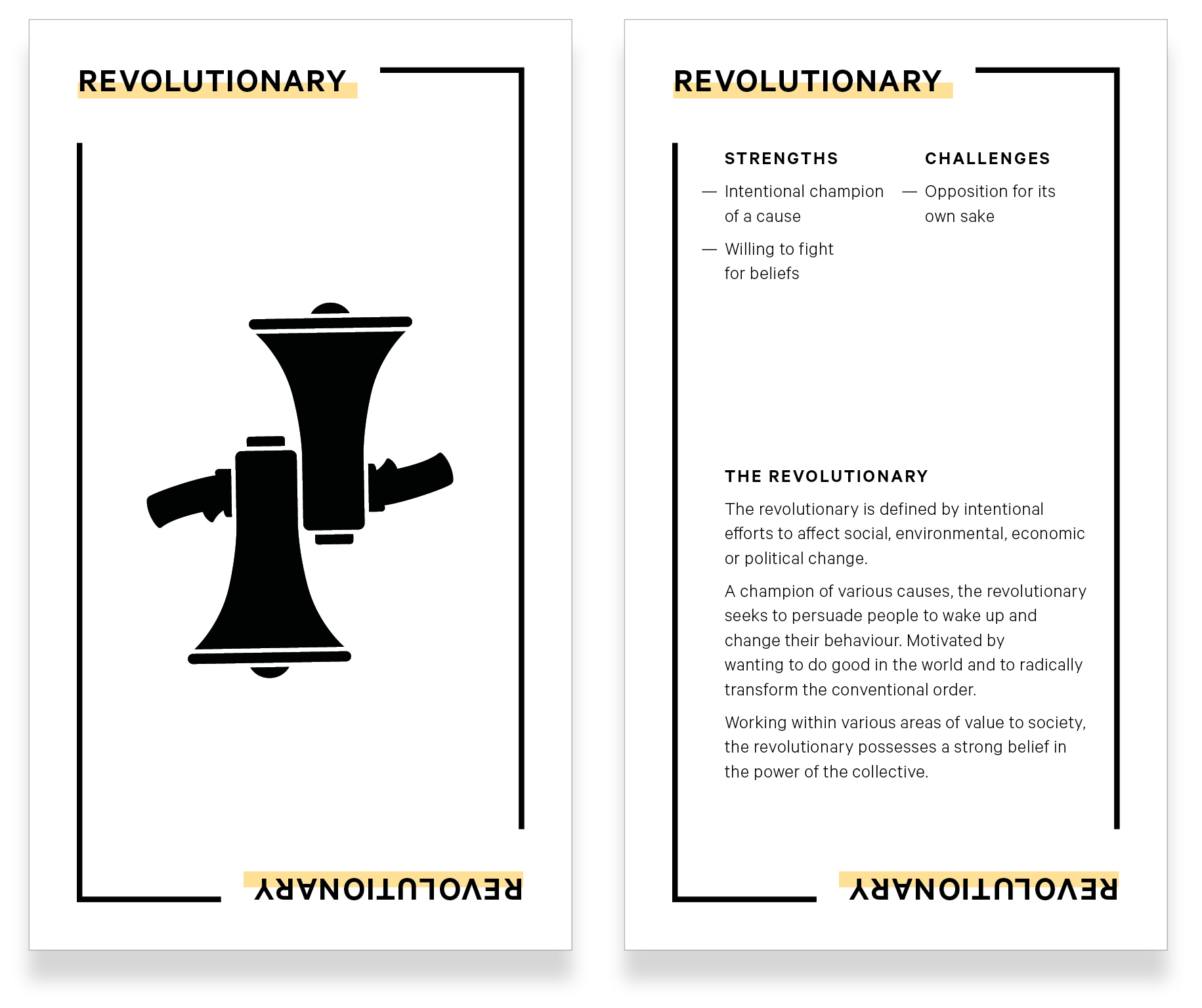
How to find your brand archetype
We like to introduce people to archetypes with four that personify the quadrants in which they sit. To help orientate you in the exercise, think of the quadrants as the points on a compass. The control quadrant contains archetypes that want to provide structure to the world. The risk quadrant is all about leaving a mark on the world. Archetypes in the belonging quadrant pursue connections. Finally, in the independence quadrant are the archetypes that seek an ideal.
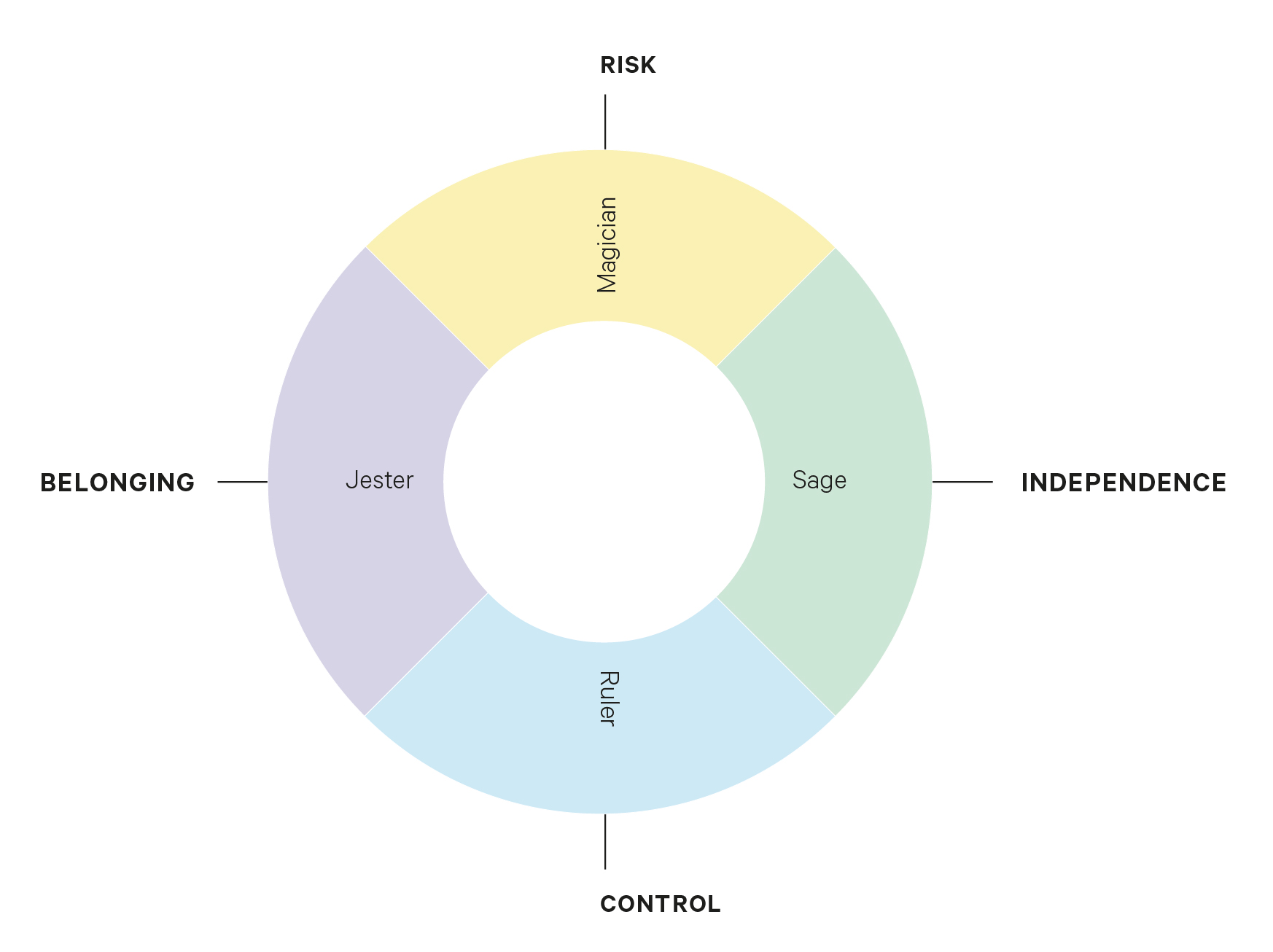
The Ruler
The Ruler sits in the southern most spot. This archetype is all about maintaining the status quo, and is typically where the market leader sits.
The Magician
Next, on the opposite end, sits the Magician. The Magician is all about mastering something and surprising people with a feat of brilliance.
The Jester
On the western front sits the Jester. The Jester belongs to the people and is trusted to speak the truth on their behalf with insight and wit.
The Sage
Off in the east sits the Sage. Needing no-one’s approval, the Sage resides in the certainty of the knowledge and wisdom they have developed.
Each of these four archetypes is flanked by two others that sit in the same quadrant.
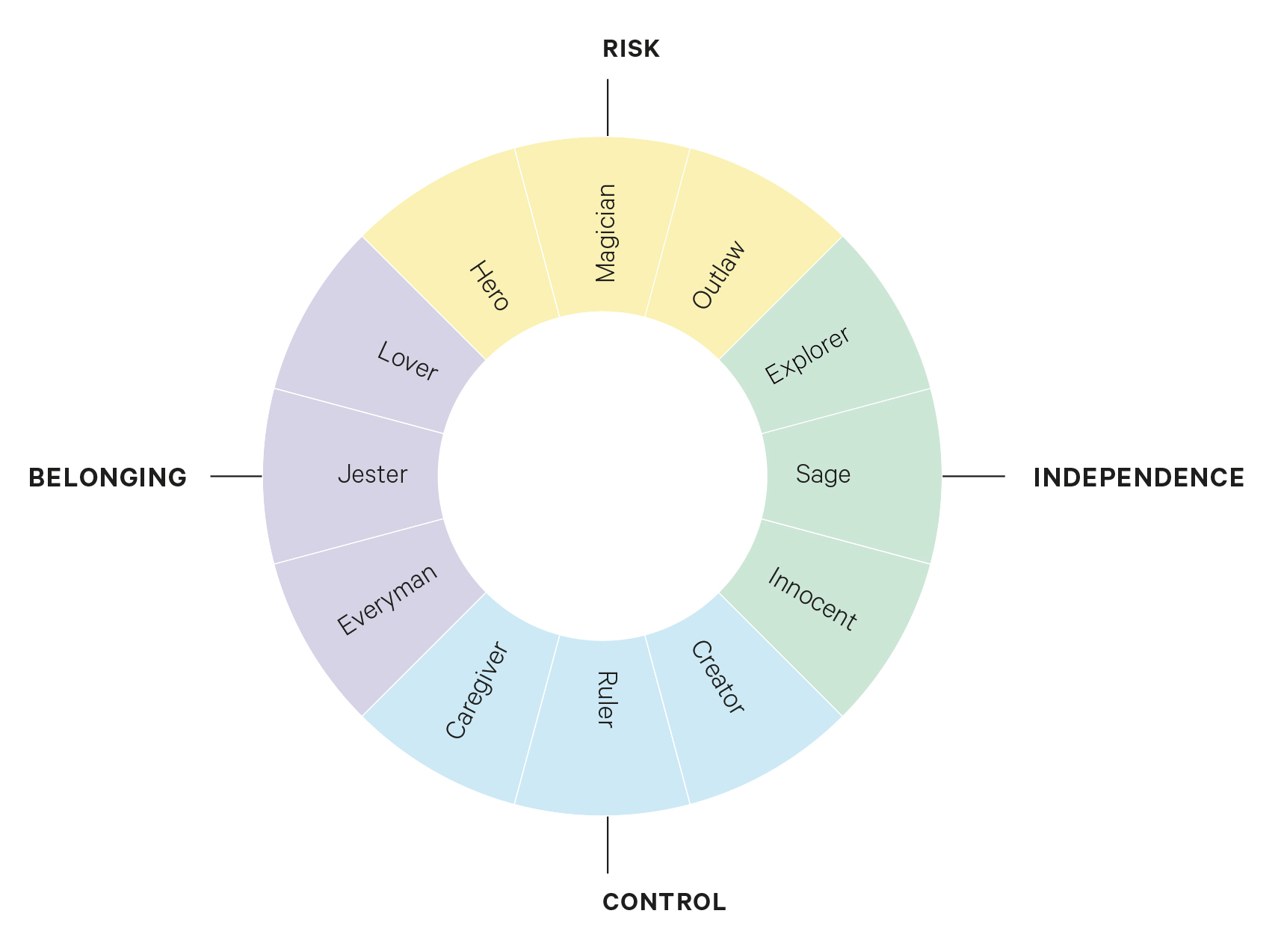
Most brands find themselves within these first 12 archetypes. But some feel they need to explore further. In our workshops we can explore up to 36, but rarely do as most brands can quickly discount at least two of the quadrants.
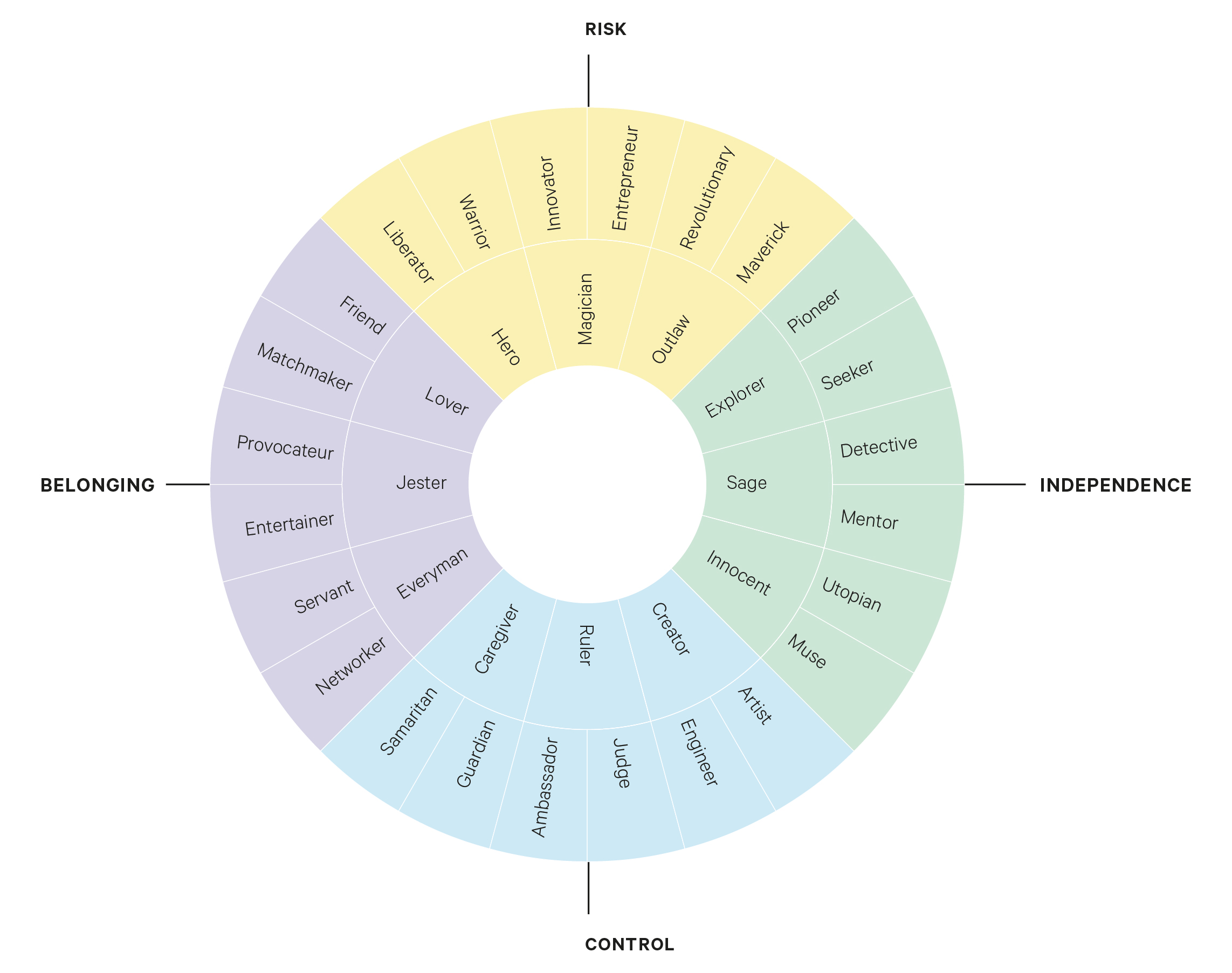
The 36 archetypes are divided into four groups of nine, each sitting within one of the quadrants. As you move around from one axis to another, say from Risk to Independence, the character of the archetypes shift. For instance, although the Maverick sits in the risk quadrant it has a strong independence streak, and is close in character to the Pioneer, who is all about being the first to do something.
> Also read: Brand storytelling begins with your back story
If you have any questions about archetypes or would like help discovering yours, get in touch with the Free team.